Embarking on CPAP therapy promises a breakthrough in battling sleep apnea, aiming for restful nights and rejuvenated mornings.
Yet, an unexpected guest might join the journey—Aerophagia.
This condition, characterized by excessive air swallowing, often lurks in the shadows, unnoticed yet impactful for those undergoing CPAP therapy.
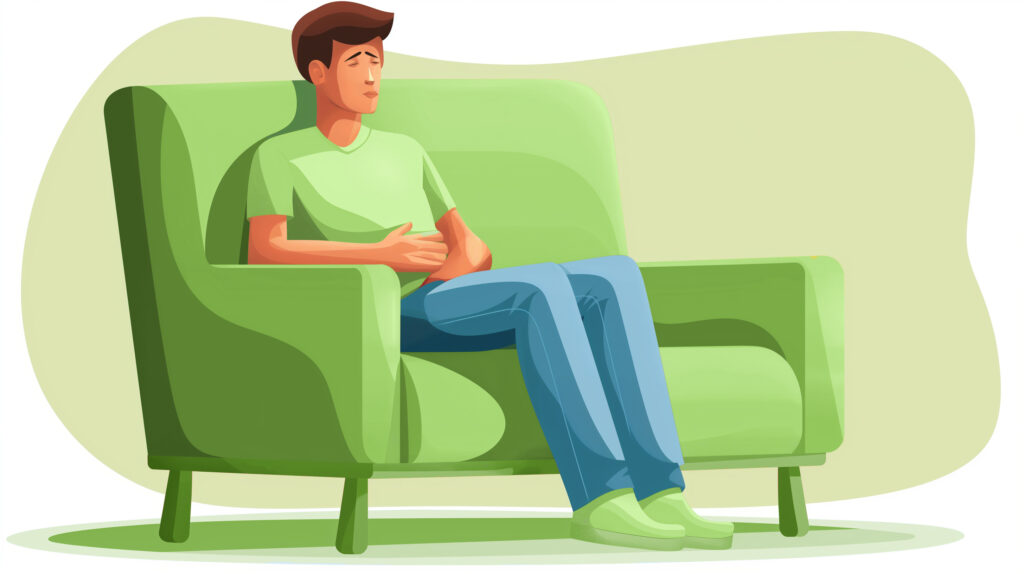
It’s crucial, now more than ever, to shine a light on aerophagia, not just for its prevalence but for its distinct influence on individuals seeking solace in CPAP therapy.
As we delve into understanding aerophagia, from pinpointing its triggers to mastering its management, remember awareness and appropriate action are your allies in transforming discomfort into comfort, ensuring your journey with CPAP therapy leads to the restful nights you’ve envisioned.
Understanding Aerophagia
Aerophagia, characterized by excessive air swallowing, is often an overlooked yet prevalent condition. According to Sleepapnea.org, an estimated 16% of people using PAP therapy experience aerophagia symptoms.
This includes both children and adults.
It’s crucial to distinguish this disorder from similar gastrointestinal issues like IBS or COPD.
Aerophagia stands out from other gastrointestinal and gut disorders in that the discomfort associated with it is caused by swallowed air moving through the body. This leads to symptoms like bloating and excessive burping.
While often overshadowed by more prominent conditions, Aerophagia requires attention and understanding, especially for those undergoing CPAP or APAP therapy for sleep apnea.
Recognizing these signs is the first step towards differentiating aerophagia from other disorders and seeking appropriate management.
Causes of Aerophagia
The onset of aerophagia can be attributed to many factors.
Anxiety and irregular breathing patterns often lead to unintentional air swallowing, while the consumption of carbonated beverages introduces excess gas into the stomach.
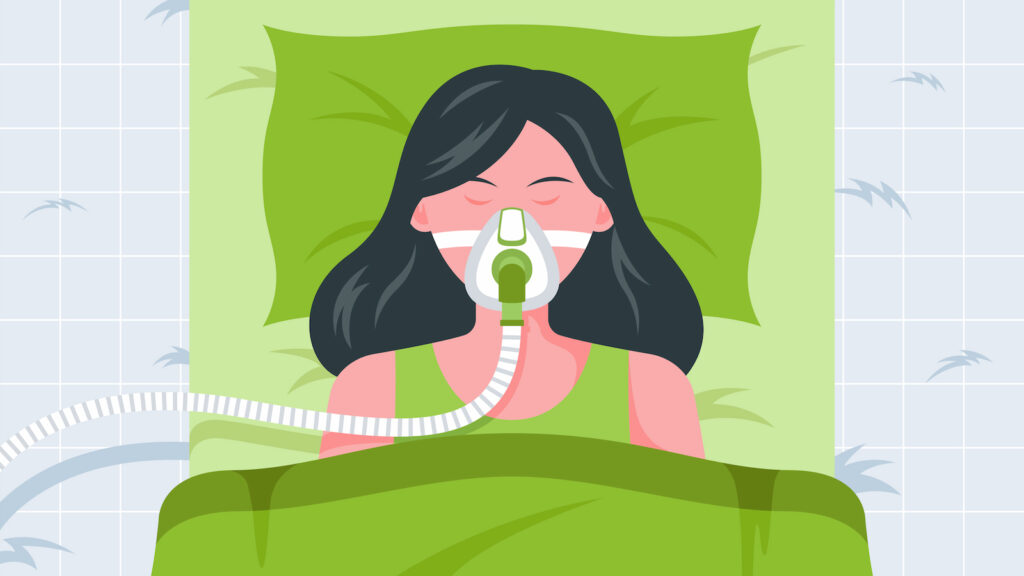
Moreover, while essential, CPAP therapy for sleep apnea can inadvertently cause aerophagia if the mask is ill-fitted or the pressure settings are not optimal.
Two studies in the Journal of Clinical Sleep Medicine also highlighted an increased occurrence of aerophagia in study participants with a history of gastroesophageal reflux disease (GERD) or those taking medications to treat the condition.
A 2008 study found that not only was aerophagia more prominent in GERD patients using CPAP therapy but also that their oxygen saturation percentages were lower when compared to the patients in the study without GERD.
A 2013 study found that 50% of the participants who self-identified as likely to have GERD on a self-assessment experienced at least one aerophagia symptom during their previous PAP therapy use period.
This study is interesting because the researchers question whether the underlying GERD symptoms or the medication used to treat GERD leads to aerophagia.
They further acknowledge that more data is needed to reach better conclusions.
Understanding and addressing these factors is crucial for individuals using CPAP therapy to ensure treatment effectiveness while minimizing discomfort from aerophagia.
Symptoms Associated with Aerophagia
CPAP users experiencing symptoms of aerophagia often report a range of concerns, with abdominal pain being a primary complaint.
This discomfort arises from the expansion of swallowed air within the digestive system, leading to distension and pain.
Increased flatulence and belching are also common, serving as the body’s attempt to rid itself of excess gas.
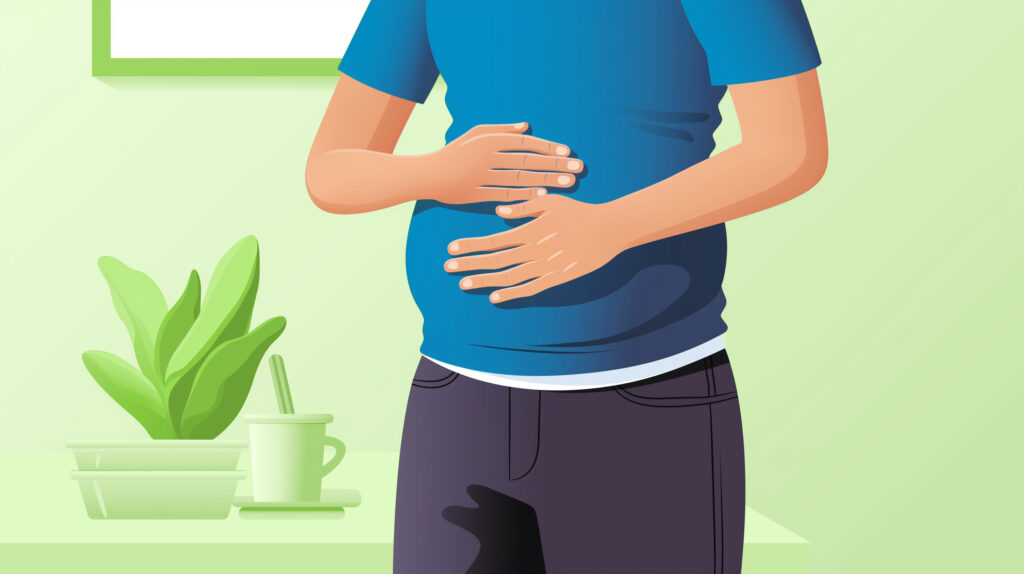
Additionally, a decreased appetite can manifest, as the sensation of being prematurely full discourages further food intake.
Recognizing these symptoms not as mere discomforts but as signals warranting attention and action is essential.
Diagnosing Aerophagia: The Journey to Understanding Your Symptoms
Diagnosing aerophagia can be challenging due to its symptoms overlapping with other gastrointestinal conditions.
However, a detailed symptom analysis and, in some cases, X-ray imaging can provide clarity.
Discussing lifestyle habits and specific instances of discomfort with your healthcare provider is crucial for an accurate diagnosis.
While X-ray imaging is not always necessary, it can offer definitive visual evidence of swallowed air, aiding in a conclusive diagnosis and tailored treatment plan.
Preventing CPAP Machine Induced Aerophagia
Managing aerophagia in the context of CPAP therapy involves a proactive approach.
Adjusting your CPAP pressure settings can significantly reduce the amount of air swallowed during use and, therefore, also reduce aerophagia symptoms.
However, this should only be performed under the guidance of your sleep medicine specialist or family doctor, as changes to pressure can also reduce the effectiveness of your PAP therapy.
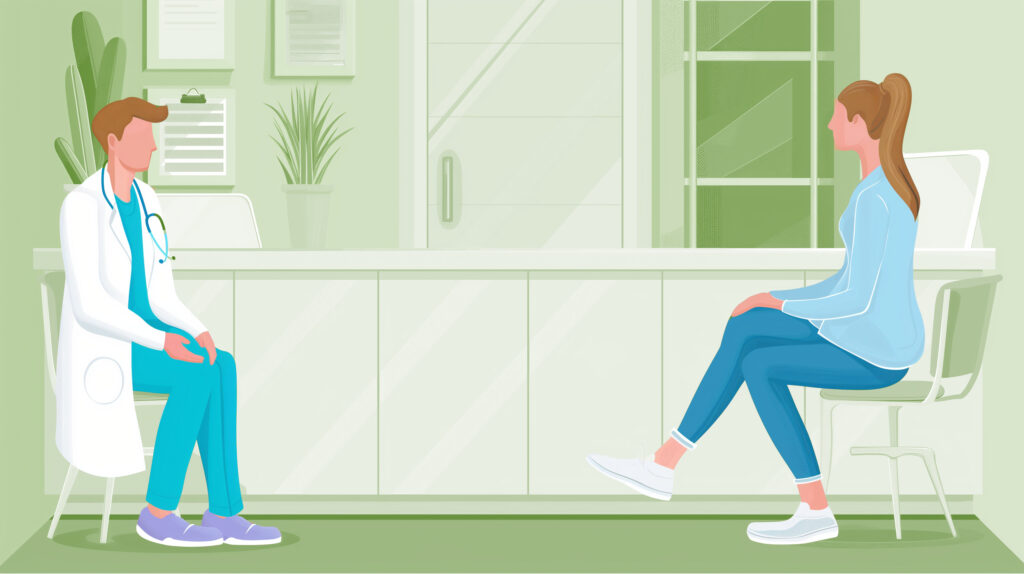
If symptoms persist, transitioning to a nasal mask or a pillow-type alternative can further minimize the risk of aerophagia.
These masks concentrate airflow into the nostrils, reducing the likelihood of air entering the digestive system.
Regular consultations with your healthcare provider are essential to ensure these adjustments effectively address your symptoms.
Treating Additional Causes Of Aerophagia
Lifestyle modifications can play a pivotal role in managing aerophagia.
Mindful eating habits, such as slowing down and thoroughly chewing food, can significantly reduce air swallowing.
Avoiding carbonated beverages and gas-inducing foods also helps.
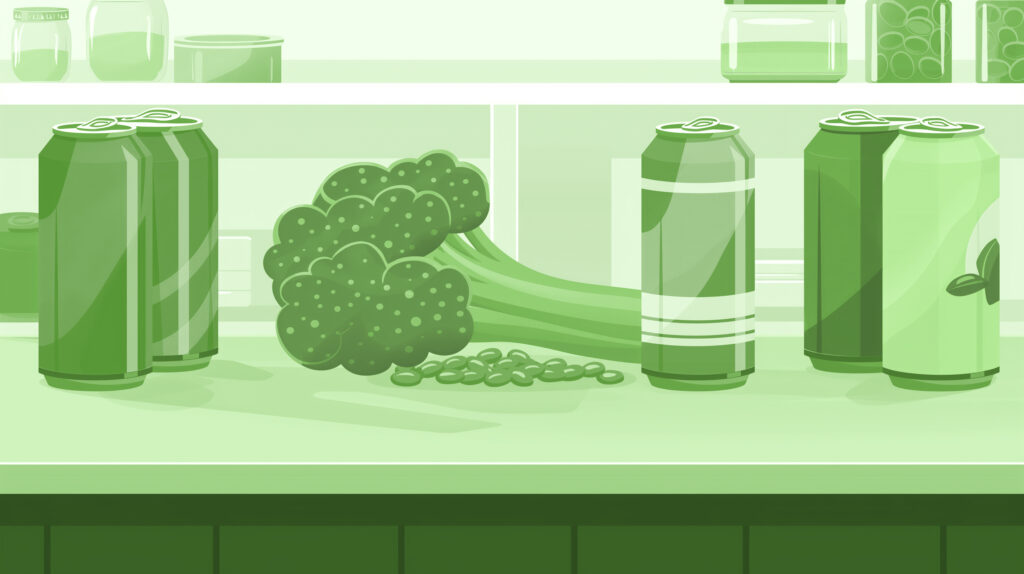
Additionally, incorporating breathing techniques like diaphragmatic breathing into your daily routine can alleviate anxiety-induced irregular breathing patterns, reducing the risk of aerophagia.
These simple yet effective changes can enhance overall well-being and relieve aerophagia symptoms.
FAQs Concerning Aerophagia
Understanding aerophagia is critical to managing it effectively. Here are some commonly asked questions to further your knowledge:
How serious is aerophagia?
Aerophagia can range from mildly uncomfortable to quite distressing, depending on the severity of the symptoms.
While not typically life-threatening, it can lead to complications like gastroesophageal reflux disease (GERD) if left unaddressed.
What is PAP therapy, and how does it help with sleep apnea?
PAP therapy, or Positive Airway Pressure therapy, is a treatment method for individuals with obstructive sleep apnea.
It involves a machine that delivers air pressure through a mask while you sleep, keeping your airway open and making breathing easier and more consistent.
For more on the various forms of PAP therapy, consult our comparison guide.
How do I know if my CPAP mask is fitted correctly?
A properly fitted CPAP mask should feel comfortable, with no significant air leaks, and remain in place as you move during sleep. It’s important to undergo a fitting with a healthcare professional or a CPAP supplier to ensure the best fit and to review fitting instructions regularly.
Our guides on CPAP machine use essentials and preventing mask sores offer in-depth guidance on adjusting your mask fit at home.
What steps can I take to reduce anxiety that may contribute to aerophagia during CPAP therapy?
Techniques such as mindfulness, deep breathing exercises, and meditation can help manage anxiety.
Establishing a calming pre-sleep routine, reducing caffeine intake, and consulting with a therapist or counsellor can also be beneficial.
Many elements of successfully adapting to your new PAP therapy routines are just as mental as they are physical. Our guide to adjusting to CPAP therapy provides tips and strategies that can help.
What alternatives to CPAP therapy are available if I can’t manage aerophagia?
Alternatives include BiPAP therapy, which provides two air pressure levels, or APAP therapy, which automatically adjusts pressure. Dental appliances, lifestyle changes, and surgical options might also be considered based on the severity of sleep apnea and individual circumstances.
How often should I consult with my healthcare provider about my CPAP therapy and aerophagia symptoms?
Regular check-ups, typically every 6 to 12 months, are recommended, or more frequently if you experience persistent issues with aerophagia, discomfort, or if your sleep apnea symptoms worsen.
Working with your healthcare provider is essential to maximizing the benefits of your PAP therapy routine. Be sure to consult our guide for more information on the importance of following up with your healthcare provider and monitoring your PAP therapy results.
Can children experience aerophagia with CPAP therapy, and how is it managed?
Yes, children can experience aerophagia. Management includes ensuring proper mask fit, adjusting pressure settings, and incorporating behavioural techniques to reduce air swallowing. Close monitoring by a pediatric sleep specialist is crucial.
For additional considerations concerning children with sleep apnea, consult our guide on pediatric sleep apnea symptoms.
Conclusion
As we conclude our exploration of aerophagia—a condition that presents unique challenges for individuals on CPAP therapy—it’s clear that the journey to managing this condition is as much about having the correct information as it is about having the proper support and resources.
This is where CPAP Supply distinguishes itself as more than just a provider. We want to be your partner in ensuring your CPAP therapy is as effective and comfortable as possible.
At CPAP Supply, we understand the intricacies of sleep apnea treatment and the unexpected hurdle aerophagia can pose.
That’s why we’re committed to offering the highest quality CPAP supplies, equipment, and accessories across Canada and unparalleled customer support.
Our experts are dedicated to helping you navigate the complexities of CPAP therapy, from selecting the ideal equipment to adjusting your treatment plan to mitigate the effects of aerophagia.
We aim to empower you with the knowledge and tools you need to enjoy restful sleep night after night.
Choosing CPAP Supply means opting for a provider that puts your satisfaction and well-being at the forefront. With our extensive selection, expert guidance, and unwavering support, we are proud to be recognized as a leading provider in Canada.
Trust CPAP Supply to be your ally in conquering aerophagia and reclaiming the restorative sleep you deserve.
References:
- NIH: CPAP-Related Aerophagia: Awareness First!
- Sleep Foundation: Aerophagia
- Sleep Apnea: Aerophagia
- Cpap.com: Swallowing Air with CPAP (Aerophagia): Causes and Solutions
- Very Well Health:How to Reduce CPAP-Related Air Swallowing Side Effects
- NIH: Aerophagia and Gastroesophageal Reflux Disease in Patients using Continuous Positive Airway Pressure: A Preliminary Observation
- Sleep-Disorders: What to Do When CPAP Makes You Swallow Air
- Apria: Clearing the Air About Aerophagia
- Sleep Review: Aerophagia Primer
- Empower Sleep: Aerophagia: A Result of CPAP
- Medical News Today: Aerophagia: Everything you need to know
- CPAP Supplies: Why Does CPAP Sometimes Make Me Gassy?
- CPAP Machines: Troubleshooting Aerophagia: CPAP Side Effects
- WebMD: What Is Aerophagia?
- Cpap.com: BiPAP May Offer Relief for Aerophagia Sufferers
- SleepQuest: Overcoming Aerophagia: Tips To Prevent Swallowing Air With Your PAP Device
- Sleep Foundation: Common Side Effects of CPAP
- Healthline: What Is Aerophagia and How Is It Treated?
- The Easy Blog: CPAP Aerophagia? – 7 Solutions To Alleviate Bloating

